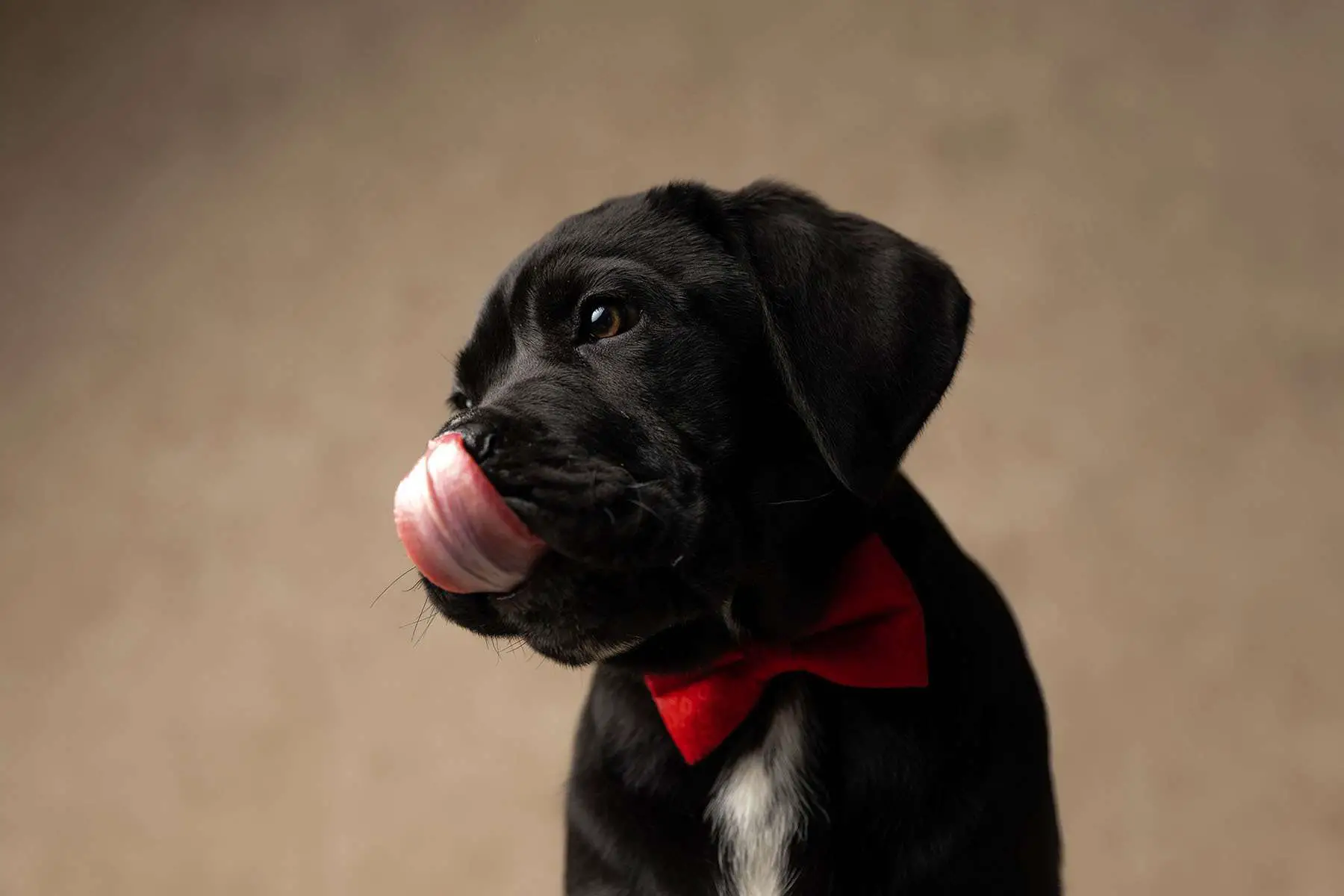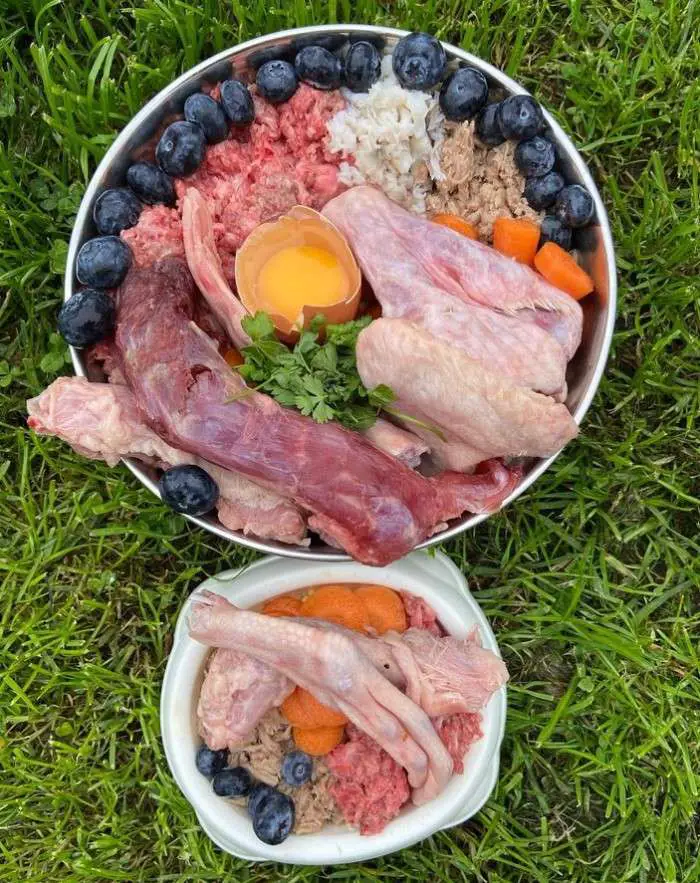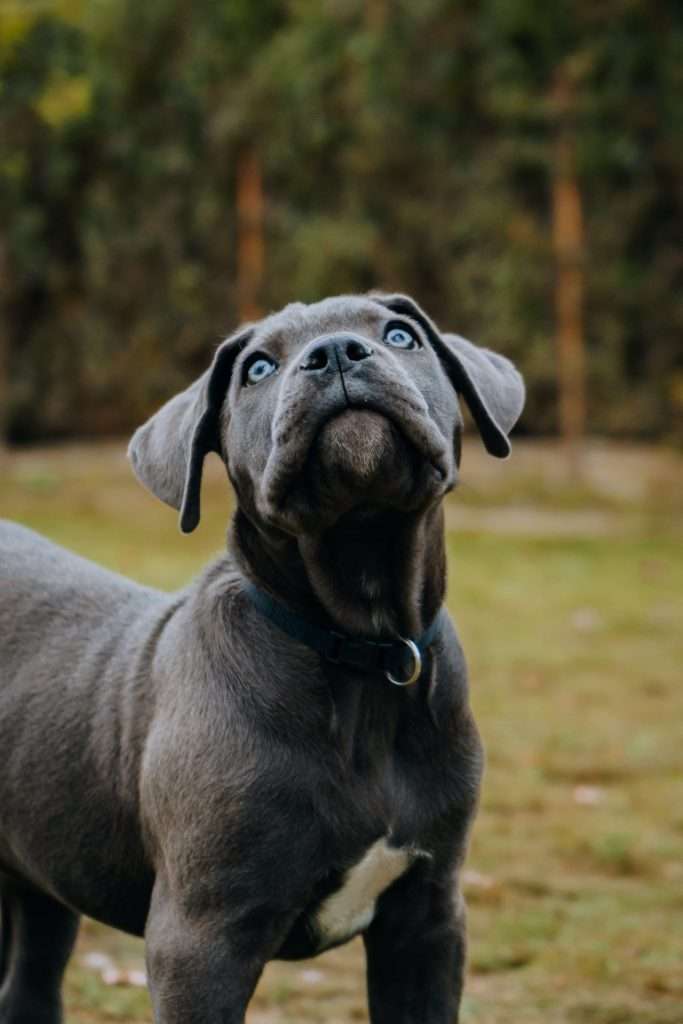Cane Corso Diet: What to feed a Cane Corso

The Cane Corso diet typically consists of a high calorie, nutrient dense food which is high in protein to help them grow to their full size.
Did you know the Cane Corso can reach a whopping 110 lbs! That’s 7.8 stone to us folk in the UK. That’s a whole lotta dog. The size of the breed requires care and attention from the owner.
As with all things dog ownership, there are differing views on what makes for an optimal diet for the Cane Corso. Some owners are adopting the raw diet which eliminates highly processed aspects of dog food such as grains and focuses on providing highly nutritious animal based produce. Others go for the more traditional approach of vet recommended brands and bulk up with kibble.
Here at PawPlanning, our job is to arm you with the information to best guide your decision. The call on diet for your Cane Corso is ultimately up to you, and the sheer fact that you’re taking the time to read this article shows us that you intend to take Cane Corso ownership seriously.
In this article, we speak to the different perspectives on the Cane Corso diet such as raw vs traditional, portion size for size and age, supplementation and avoiding bloat which can be common with this particular breed.
Let’s start with the raw diet which is becoming trendy in the Cane Corso community…
Raw Diet For The Cane Corso
The raw diet for the Cane Corso breed is a trending approach to dog nutrition, although not necessarily new. Dog owners throughout millennia have known the benefits of feeding highly nutritious animal derived products to their pets in a bid to improve their longevity.
The raw diet essentially means that cutting out over processed elements such as grain and over starchy derivatives found in typical off the shelf food.
Here’s a typical Cane Corso raw diet list:
- Organ meats such as beef heart, liver and kidneys
- Muscle meat
- Whole or ground bone and marrow
- Dog safe vegetables
Some owners do include some oily fish in the diet, such as sardines and mackerel. This may be worth occasional inclusion and experimentation.

Advocates of the raw Cane Corso diet believe that a dog’s stomach is not designed to digest and ferment excess carbohydrates (typical kibble). Over-relying on this can put stress on a dog’s immune system, cause inflammation and metabolic instability such as insulin spikes.
The same advocates state that a raw diet can lead to healthier gut biomes which helps address diabetes, obesity, arthritis, skin complaints and general digestive issues. Processed dogs food which include a lot of additives and chemicals that can upset the gut biome by fuelling harmful bacteria. This can then supposedly have a negative impact on the dogs immune health and general day to day wellbeing.
One clear advantage of the raw feeding is that you’re able to control the exact elements that go into the diet as it’s based on the accumulation of single ingredient foods (no additives or preservatives).
There are dozens of potential Cane Corso diet recipes that you could create with these components listed above – and when it comes to ratios, opinions vary. A typical raw diet will consist of 70% muscle meat, 10% organ meat, 10% bone and 10% vegetables. Again, if the raw diet is something you’re interested in then the ratios and food types are something that you’re going to have to experiment with. You may have a fussy Corso that only likes certain foods.

In general, a raw food diet is said to improve the look, feel, smell of the Cane Corso. It apparently helps strengthen teeth, improve muscle mass and boost energy levels and immunity.
What Are The Downsides To The Raw (BARF) Diet For The Cane Corso?
Although the raw / BARF (Biologically Appropriate Raw Food) diet is heralded by many dog owners, it is not without its challenges and challengers.
It must be stated that many vets do not approve of the raw dog food diet. They are concerned with hygiene aspects within the home and the regulation of quality within this animal produce, nervous of harmful pathogens. Many vets will recommend that you should adapt the diet by searing some of the food to help negate some of the concerns.
They also point out that owners should be well researched and aware of where they are sourcing animal products from. It should be organic and high welfare if possible. Finally, they especially do not recommend raw food for young puppies or for any dogs with immune conditions.
Other downsides to the raw Cane Corso diet come down to expense and time intensity. This diet is not cheap or convenient, especially when considering the high caloric intake needed for the Cane Corso. Some owners estimate they spend between £1000 to £1200 per year on ensuring their dog sticks to the raw diet. That is a serious expense to many households. Owners can opt for cheaper cuts and build relationships with local farmers or butchers to try and get the best deals.
Finally, another drawback of this diet is the tendency for “cannon butt” if you over feed your Cane Corso too much nutrient density in one sitting. To reduce this, do not look to over do it on things such as liver and kidney.
Fresh Food Homemade Diet For Your Cane Corso
The fresh food homemade diet is typically made up of home-cooked meats and veg. If you’re looking for clean produce and to have control over the ingredients that go into your Corso’s diet, then this approach may just work best for you.
There are many excellent fresh food brands on the market these days if you’re looking to save time. They produce the standard ingredients of chicken, lamb, beef, peas, spinach, carrots, etc. You can also take control of this by making this at home yourself, which is a popular option for many owners.
Some owners find that supplementing this approach with wet food and a handful of kibble from time to time helps them balance their busy lives with dog ownership. Another method is to prepare batched meals, which can also be put in the freezer and served (defrosted obviously) over the course of the week.
Kibble is the easiest option. There are many good kibble brands on the market these days. If this is something that you choose to use, we recommend that you put in the time to research the best brands for your breed. Opinions vary, but we recommend trying to choose the cleanest options where possible, limiting preservatives and additives.

This approach to diet is still more expensive than simple canned wet food and kibble, but it does ensure more control over ingredients and nutrients in your dog’s diet. If you want to balance it with some of the elements of the raw diet, then you can experiment by adding in some raw beef muscle meat, raw meaty bones, and organs such as heart and liver.
How Much Should You Feed Your Cane Corso? Puppy Vs Adult Intake
Cane Corso diet requirements change depending on its age. As we know, the breed is a giant built with dense muscle. This means it requires a high caloric intake throughout its lifespan. However, there are differences to take into account from puppy, through to adult.
Let’s start with how much you should feed your Cane Corso puppy…
Your majestic friend will likely grow north of 100lb in weight. This chunk will grow quickly. Good nutritious puppy food is an absolute must as we want them to gain weight in a healthy way.
You should look for puppy food that’s high in protein, but isn’t overly high in calcium as this may negatively impact joint development and skeletal growth in younger age. For the puppy phase, kibble is usually your best bet, but do your best to add in some fresh wet food from time to time to help improve bioavailability of protein.
The feeding amounts below are an approximation of how much you should feed your puppy, we advise you consult a recognised vet to confirm the correct amount for your dog. They will determine the dog’s weight vs energy levels and judge accordingly.
The American Kennel Club recommends the following:
- Between 6-12 weeks, feed your dog up to 4 times a day.
- Around 10 weeks, start to add in wet food.
- At 3-6 months, cut back to 3 times a day.
- By the time your Cane Corso is 6-12 months, twice a day should be sufficient.
- After your Cane Corso is 1 year or older, you may switch to adult food. However, be sure to consult with a vet first.
The amount you feed your Cane Corso is also important. Purina recommends the following (we have converted to grams and rounded up).
- First 3 months: 128g – 384g per day
- 4-5 months: 384g – 512g per day
- 6-8 months: 384g – 736g per day
- 9-11 months: 512g – 768g per day
- 12-24 months: 786g – 1152g cups per day
Please pay attention to this. Dogs’ appetites can vary from day to day, as can their weight gain reaction to certain foods. Every dog is unique and has its own genetic differences. If you notice unnecessary weight gain then aim to reduce the portions accordingly.
What if your puppy is still hungry?
This happens, puppies will not control portions on their own, many will eat until they fall to sleep (what a life!). You may need to try and train your puppy to eat a bit more slowly, which will help prevent common bloating issues with the Cane Corso breed as it ages anyway. In order to do this, you could look to add in some feeding puzzles which also help keep your intelligent friend mentally stimulated too.

If you have other concerns with this, then you should keep an eye on weight gain and speak to your vet. Another thing to check could be the nutritional elements of the kibble, is it nutrient dense enough.
Other Tips For Cane Corso Diet
Always ensure your Cane Corso is getting enough water. Not only is hydration an overall important factor in longevity, taking on adequate water may help to stop overeating and bloating. If your budget allows, try to give your Cane Corso good quality water. This may mean filtered and then re-mineralised.
Feel free to give your friend some treats to reward good behaviour when training. Where possible, aim to purchase natural treats and limit them so that they do not cause unnecessary weight gain. Treats can be a great way of adding supplementation of vitamins and minerals to your friends diet, but also help improve their dental health.
Speaking of supplements…
Are Dog Supplements Good For Your Cane Corso?
You should always consult a vet before committing to supplementation for your dog. If this is something you’re keen to pursue, then please choose brands that have low or no additives & preservatives. Each dog breed may have individual recommended needs, so it’s best to research this area first.
The Cane Corso is known to suffer from joint issues due to its size and rigorous nature. Chondroitin and glucosamine are two supplements that can help benefit joint health. Additionally, omega 3 from oily fish or grass fed beef may be therapeutic.
Finally, Watch Out For Bloat!
Cane Corsos are known for getting gastric torsion & bloat. Please try to get your Corso to slow down when it eats, there are ways to achieve this such as including feeding puzzles at meal times as well as adding frozen elements to your dogs meal, forcing them to chew more.
Bloat occurs from eating large, heavy meals very quickly. It may be preferable to feed your Corso more frequent, smaller meals. Although this is more time intensive, it’s a better outcome for your Corsos health.